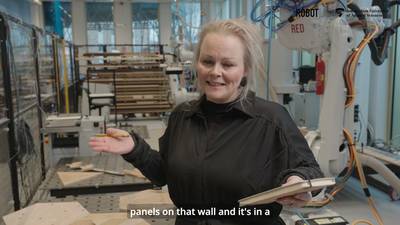In het dagelijks taalgebruik is ‘2.0’ een vage kreet geworden die ‘vernieuwing’ aanduidt: Paus Franciscus creëert een ‘Vaticaan 2.0’ en een dokter met internet is een ‘huisarts 2.0’. Nieuw en verbeterd! Maar wat moeten we ons dan bij 4.0 voorstellen? Nóg nieuwer? Nóg beter?
LINK
Since Germany presented the so-called Industry 4.0 in 2011, there has been an increasing number of studies related to this concept, seeking to cover different perspectives, from supply chain management to harmonizing production systems in sustainability. However, when exploring the risks associated with implementing Industry 4.0, it is observed that there are still research gaps in combining these perspectives. In this sense, this work is a systematic literature review of the possible challenges that organizations face and are associated with implementing Industry 4.0 technologies in managing the Supply Chain in a Sustainability context. A review of 45 papers was conducted based on a filter process for 103 initial publications to categorize the main challenges presented in the literature. The results show a tendency towards challenges involved with labor competence followed by those challenges related to the costs of implementing 4.0 technologies, organizational culture, and computer security, so that knowledge of this condition will allow the formulation of a strategy according to the situation. The document’s analysis and findings section should highlight the general perception of opportunities a company can consider once challenges related to Industry 4.0 are shown.
LINK
In recent years, a step change has been seen in the rate of adoption of Industry 4.0 technologies by manufacturers and industrial organizations alike. This article discusses the current state of the art in the adoption of Industry 4.0 technologies within the construction industry. Increasing complexity in onsite construction projects coupled with the need for higher productivity is leading to increased interest in the potential use of Industry 4.0 technologies. This article discusses the relevance of the following key Industry 4.0 technologies to construction: data analytics and artificial intelligence, robotics and automation, building information management, sensors and wearables, digital twin, and industrial connectivity. Industrial connectivity is a key aspect as it ensures that all Industry 4.0 technologies are interconnected allowing the full benefits to be realized. This article also presents a research agenda for the adoption of Industry 4.0 technologies within the construction sector, a three-phase use of intelligent assets from the point of manufacture up to after build, and a four-staged R&D process for the implementation of smart wearables in a digital enhanced construction site.
DOCUMENT

Uitwerking van het smart industry ecosysteem voor onderwijs en arbeid. Hierin aandacht voor Smart Industry en Formeel leren, Leven Lang Leren, flexibilisering en Learning by doing.
DOCUMENT

Eindrapportage Smart Industry Hub Noord Nederland
DOCUMENT

The Circular Wood 4.0 Workflow API is a comprehensive and automated “file-to-factory” system that bridges the gap between design using waste wood resources and production processes aligned with Smart Industry principles. This software serves as the core IT infrastructure for an end-to-end automated workflow, enabling seamless data flow from material availability to final production. Key features include full traceability, real-time process monitoring, and integration of design and manufacturing stages. The API is composed of several interconnected components that manage the entire workflow, from intelligent resource matching and design generation to production preparation and execution; facilitating efficient, sustainable, and transparent fabrication processes.
LINK
How can a smart ‘upcycle wood factory’ (powered by industry 4.0 technologies and principles) help create meaningful and viable applications out of residual wood applicable to the hospitality sector?This video gives the answers.
YOUTUBE

Localization is a crucial skill in mobile robotics because the robot needs to make reasonable navigation decisions to complete its mission. Many approaches exist to implement localization, but artificial intelligence can be an interesting alternative to traditional localization techniques based on model calculations. This work proposes a machine learning approach to solve the localization problem in the RobotAtFactory 4.0 competition. The idea is to obtain the relative pose of an onboard camera with respect to fiducial markers (ArUcos) and then estimate the robot pose with machine learning. The approaches were validated in a simulation. Several algorithms were tested, and the best results were obtained by using Random Forest Regressor, with an error on the millimeter scale. The proposed solution presents results as high as the analytical approach for solving the localization problem in the RobotAtFactory 4.0 scenario, with the advantage of not requiring explicit knowledge of the exact positions of the fiducial markers, as in the analytical approach.
DOCUMENT
The development of information and communication technologies (ICT) has led to many innovative technologies. The integration of technologies such as the internet of things (IoT), cloud computing, and machine learning concepts have given rise to Industry 4.0. Fog and edge computing have stepped in to fill the areas where cloud computing is inadequate to ensure these systems work quickly and efficiently. The number of connected devices has brought about cybersecurity issues. This study reviewed the current literature regarding edge/fog-based cybersecurity in IoT to display the current state.
DOCUMENT
This chapter explains in brief what is needed to achieve more sustainable manufacturing processes. It develops both aspects of sustainable, economic, and technical feasibility with most focus on the latter. Remanufacturing processes are described together with relevant factors that enhance their effectivity and efficiency. An overview is given of what kind of shopfloor innovations are required in the near future and some suggestions on how digital and other Industry 4.0 technologies could help to move toward circular manufacturing.
MULTIFILE
